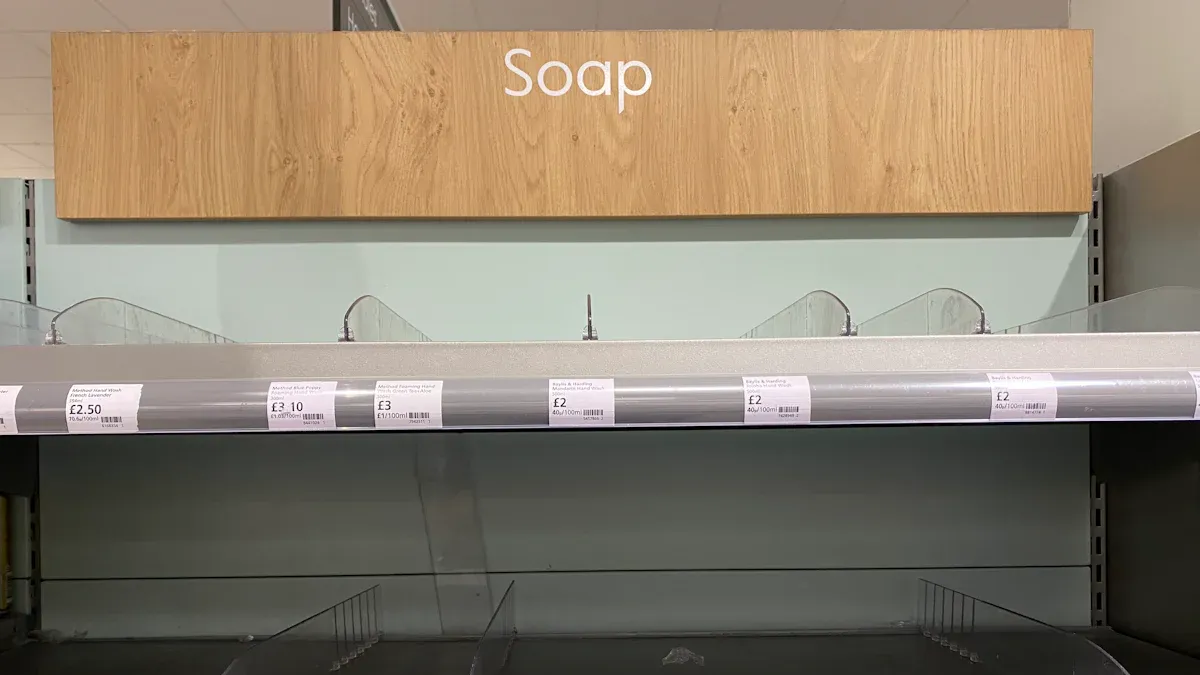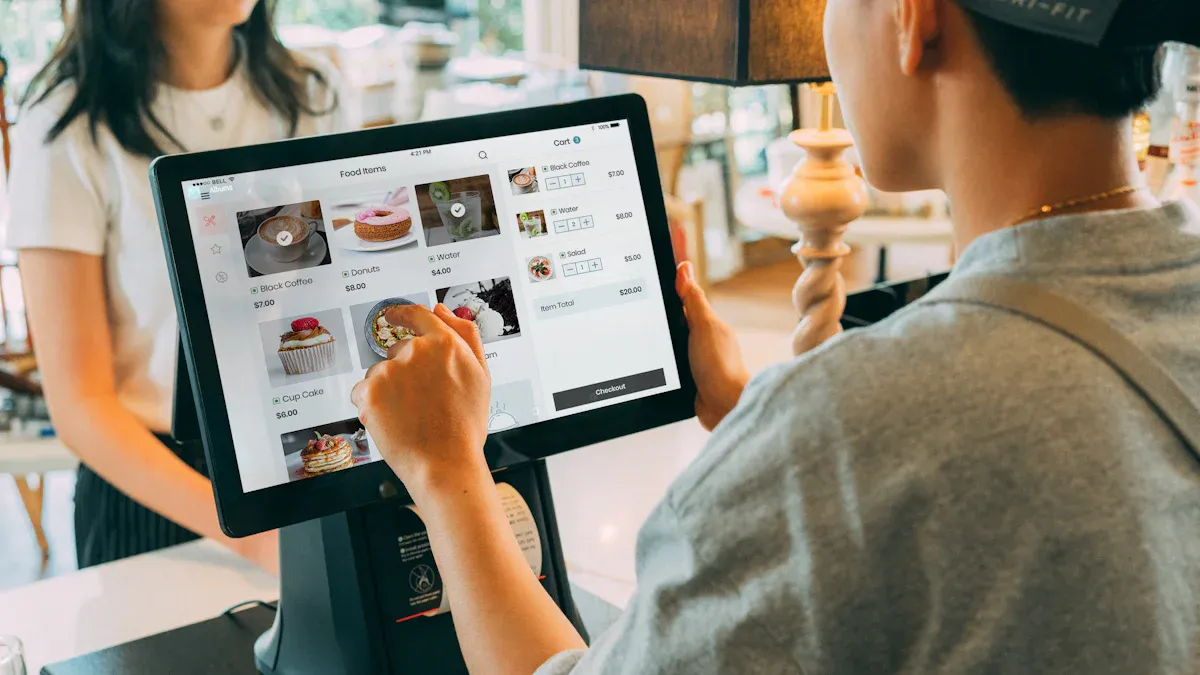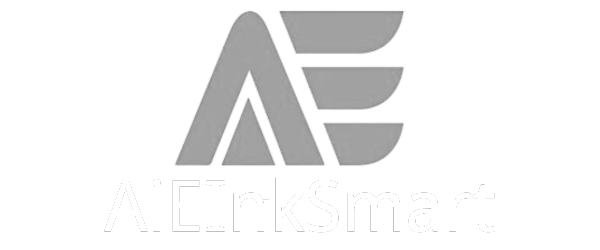
You can unlock significant benefits for your store by adopting electronic shelf labels. Digital shelf labels automate price updates, reducing labor costs by up to 80% and cutting pricing errors by 30%. Maurer’s Market reduced the time to update 1,400 price tags from four days to under ten minutes. Digital shelf labels like ESL Gateway AP and ESL Price Tag support operational efficiency, dynamic pricing, and enhanced customer experience. Esl Retail solutions also help you keep pace with leading retailers:
| Retailer | Evidence of Competitive Edge |
|---|---|
| Carrefour | 80% less label maintenance time; 50% fewer pricing errors; higher satisfaction |
| Tesco | Better stock management, pricing efficiency, and increased revenue |
| JD.com | AI-powered dynamic pricing and improved shopping efficiency |
Understanding Electronic Shelf Labels and Their Benefits

What Are Electronic Shelf Labels?
Electronic shelf labels transform how you manage pricing and product information in your store. These digital shelf labels replace traditional paper tags with advanced technology, giving you more control and flexibility.
Digital Display Technology
You can choose from several types of digital price displays to match your store’s needs:
- E-Paper ESLs offer high readability and low power consumption. Grocery stores and pharmacies often use these for static information and long battery life.
- LCD ESLs provide vibrant, full-color displays. These work well in fashion boutiques or electronics stores where you want to highlight promotions or product videos.
- LED ESLs stand out in busy areas, drawing attention to featured products or sales.
- RFID-integrated ESLs combine display and inventory tracking, helping you manage stock in real time.
- Customizable ESLs allow you to add branding, unique shapes, or interactive features like barcode scanning.
Digital shelf labels give you the flexibility to present clear, accurate pricing information and adapt to different retail environments.
Wireless Connectivity
Digital shelf labels connect wirelessly to a central management system. You can use Wi-Fi, ZigBee, or proprietary radio systems to link every label in your store. This wireless setup lets you update thousands of labels at once, saving time and reducing manual work. You gain the ability to control pricing information from a single dashboard, ensuring consistency across all shelves.
How Digital Shelf Labels Work
Digital shelf labels work by integrating with your point-of-sale (POS) and inventory systems. This integration streamlines your operations and delivers measurable benefits.
Integration with POS and Inventory Systems
You start by assessing your store’s needs, such as reducing pricing errors or manual update inefficiencies. Next, you select an integration method—API-based for cloud POS systems or middleware for legacy setups. After installing and configuring the labels, you connect them to your central system. This process enables you to manage pricing information, inventory, and promotions from one place. You eliminate manual errors and gain the ability to implement dynamic pricing strategies. Inventory management also improves, with real-time tracking and automated replenishment.
Real-Time Price Updates
Digital shelf labels enable real-time updates for pricing and product details. When you change a price or promotion in your system, the update appears on the shelf within seconds. Inventory scanning robots can detect out-of-stock items and trigger the labels to display messages like “Replenishment in Progress.” This process keeps your pricing information accurate and consistent, reduces manual checks, and minimizes errors. You can also display additional information, such as restock times, directly on the digital shelf labels.
Tip: By using digital shelf labels, you ensure that your customers always see the correct price, which builds trust and supports a seamless shopping experience.
The benefits of electronic shelf labels include improved price accuracy, reduced labor costs, and enhanced customer satisfaction. You gain a powerful tool for managing your store efficiently and staying competitive in today’s retail landscape.
Cost Savings and Enhanced Accuracy and Speed
Electronic shelf labels deliver measurable cost savings and enhanced accuracy and speed for your store. By automating price updates and eliminating manual processes, you can reduce costs, minimize errors, and create a more sustainable business model.
Reducing Manual Price Tag Changes
Labor Cost Reduction
Manual price tag changes consume significant time and resources. When you switch to electronic shelf labels, you automate this process and free up your staff for higher-value tasks. The following table shows how different types of retailers benefit from this transition:
| Retailer Type | Percentage Reduction in Manual Price Tag Changes / Labor Time Saved | Additional Details |
|---|---|---|
| Large Supermarket Chains | Up to 40% reduction in pricing errors; significant labor cost savings (up to $200,000 annually) | Repricing time reduced drastically (e.g., from 2 weeks to 5 minutes) |
| Maurer’s Market (Small Store) | Up to 80% labor time saved on price updates | Price update time reduced from days to minutes |
| General Small Retail Stores | Around 30% reduction in pricing errors and labor cost savings | Improved pricing accuracy and elimination of paper label costs |
You can see that large supermarket chains and small stores alike experience dramatic reductions in labor time and costs. For example, a store that previously spent 10 hours per week on manual price updates can save up to $39,000 annually in labor costs alone. The automation provided by electronic shelf labels enables instant price updates, allowing your employees to focus on customer service and sales.
Tip: By reallocating labor from repetitive tasks to customer engagement, you improve both operational efficiency and staff morale.
Minimizing Human Error
Manual price updates often lead to mistakes, which can cause pricing disputes and customer dissatisfaction. Electronic shelf labels eliminate errors by synchronizing prices across all shelves in real time. You benefit from a centralized system that ensures consistent and accurate pricing.
- Electronic shelf labels remove the need for manual price changes, a common source of human error.
- Centralized management allows you to update prices instantly and uniformly across your store.
- Businesses using electronic shelf labels report up to a 90% reduction in pricing errors.
- Fewer pricing errors mean fewer checkout disputes and improved customer satisfaction.
- Indirect benefits include labor cost savings and increased operational efficiency, both of which support your store’s bottom line.
Lowering Printing and Material Expenses
Eliminating Paper and Ink Costs
Traditional paper price tags require constant printing, replacement, and disposal. By adopting electronic shelf labels, you eliminate these recurring expenses. For example, a retailer managing 1,000 SKUs with weekly price changes can save approximately $7,800 per year on printing and material costs. This saving covers paper, ink, and replacement hardware, and it adds up quickly as your store grows.
Environmental Impact
Switching to electronic shelf labels also supports your commitment to a sustainable business model. These digital solutions reduce paper waste and lower your carbon footprint. E-ink displays consume very little energy and can even operate on indoor light, further reducing environmental impact. Battery-free innovations, such as photovoltaic-powered labels, eliminate battery waste and make your store more eco-friendly.
- Electronic shelf labels replace paper tags, significantly reducing paper and ink consumption.
- E Ink technology lowers your store’s carbon footprint and supports recyclability.
- Battery-free ESLs eliminate toxic battery waste and further reduce environmental harm.
- Retailers like Carrefour and MediaMarket have adopted these solutions, demonstrating real-world environmental benefits.
- Low-energy displays contribute to energy savings and support your sustainability goals.
By integrating electronic shelf labels, you not only reduce costs and eliminate errors but also position your store as a leader in sustainable retail practices.
Pricing Accuracy and Compliance with Electronic Shelf Labels
Electronic shelf labels give you a powerful way to maintain pricing accuracy and meet compliance standards in your store. By automating price updates and centralizing control, you can ensure that pricing information remains consistent and reliable across every shelf.
Real-Time Price Synchronization
Preventing Price Discrepancies
Traditional paper labels often create pricing errors. Manual updates involve several steps and people, which increases the risk of outdated or incorrect pricing information. With electronic shelf labels, you automate and centralize price changes. You can update pricing information directly from your database, and the changes appear instantly on the shelf. This process eliminates human input errors and allows you to make frequent price adjustments as needed.
- Paper labels require manual handling, which leads to delays and mistakes.
- Electronic shelf labels automate updates, ensuring real-time accuracy.
- Remote management removes the risk of human error.
- AI and analytics in ESL systems help you optimize pricing information based on demand.
- Automation builds transparency and trust by matching shelf prices with checkout prices.
Note: When you use electronic shelf labels, you reduce labor and time costs while preventing discrepancies caused by manual label replacement.
Ensuring Legal Compliance
You must follow strict regulations regarding pricing information in retail. Electronic shelf labels help you meet these requirements by providing accurate, up-to-date prices and clear audit trails.
- They support compliance with consumer protection laws by ensuring price accuracy and transparency.
- You can manage personalized pricing while respecting data privacy regulations.
- ESLs help you avoid illegal price discrimination and price gouging.
- Centralized control and audit trails make it easier to prove compliance with pricing laws.
- Real-time updates allow you to adjust prices within legal limits and display compliant promotions.
Case Studies and Data
Example: National Retailer Results
Many national retailers have adopted electronic shelf labels to improve pricing accuracy and compliance. These systems allow you to meet regional regulatory requirements, such as FDA labeling standards in the U.S. or GDPR data privacy rules in the EU. Smaller retailers often face challenges with complex regulations, but ESLs help reduce these risks by ensuring accurate and timely price labeling.
Industry Benchmarks
You can measure your store’s performance using several key benchmarks:
- Price Accuracy Rate: Tracks how well shelf, POS, and online prices match.
- Update Response Time: Measures how quickly you update pricing information on the shelf.
- Labor Efficiency: Shows the reduction in labor hours spent on pricing tasks.
- Return Rate from Pricing Errors: Indicates fewer product returns due to pricing mismatches.
- Customer Satisfaction (CSAT): Reflects improved feedback about pricing clarity.
These benchmarks help you monitor the effectiveness of electronic shelf labels in maintaining pricing accuracy and compliance. By focusing on these metrics, you can build a more reliable and trustworthy retail environment.
Operational Efficiency Through Digital Shelf Labels
Digital shelf labels transform your store’s daily operations, making processes faster and more reliable. You gain the ability to manage pricing, inventory, and promotions with a few clicks, which leads to significant improvements in operational efficiency.
Streamlining Store Operations
Faster Price Updates During Promotions
You can update prices and promotions instantly across your entire store with digital shelf labels. This technology eliminates the need for manual price changes, especially during high-traffic periods or sales events. When you launch a promotion, you no longer need to print and replace hundreds of paper tags. Instead, you push updates wirelessly from a central dashboard, and every shelf reflects the new price within seconds.
- Real-time, automated price and promotion updates save your staff hours of repetitive work.
- Integration with your POS and inventory systems ensures that pricing and stock information remain synchronized, even during busy periods.
- Centralized management platforms let you control all labels wirelessly, reducing errors and delays.
- Automated discounting and dynamic promotional displays, such as LED indicators, help you highlight special offers and respond quickly to market changes.
Tip: With digital shelf labels, you can schedule promotions in advance and adjust them on the fly, giving your store unmatched flexibility during peak times.
Simplifying Inventory Management
Digital shelf labels do more than display prices—they connect directly to your inventory database. This connection allows you to automate stock level monitoring and trigger restocking alerts when items run low. You no longer need to send staff to check shelves manually, which saves valuable time and reduces operational inefficiencies.
- Real-time synchronization with inventory databases keeps your stock information accurate.
- Automatic price adjustments based on stock levels help you manage overstock and prevent out-of-stock situations.
- Centralized stock information simplifies order fulfillment and inventory tracking.
- Pick-to-light solutions integrated with digital shelf labels enable associates to fulfill orders 20-30% faster.
You achieve efficient resource management by reducing manual checks and streamlining inventory tasks.
Freeing Up Staff for Customer Service
Reallocating Labor to High-Value Tasks
When you automate routine tasks with digital shelf labels, you free your staff to focus on activities that drive sales and improve customer satisfaction. Employees spend less time on manual price changes and more time assisting shoppers, restocking shelves, or merchandising.
- Staff can update pricing remotely, speeding up store resets and product rotations.
- Automated inventory counts reduce the need for manual scanning, allowing workers to focus on customer service.
- Labor savings from digital shelf labels can be reinvested into training or merchandising improvements.
Improving Staff Morale
You create a more positive work environment by reducing tedious manual tasks. Employees appreciate the shift from repetitive labor to engaging, customer-facing roles. This change not only boosts morale but also increases productivity and loyalty.
Note: When your team spends more time helping customers and less time on routine shelf tasks, you see higher satisfaction among both staff and shoppers.
Digital shelf labels give you the tools to streamline operations, improve staff allocation, and deliver a better experience for everyone in your store.
Dynamic Pricing Capabilities and Benefits
Dynamic pricing capabilities give you the power to adjust prices instantly and respond to changing market conditions. With electronic shelf labels, you can implement advanced pricing strategies that drive profitability, improve efficiency, and enhance customer satisfaction. You gain the flexibility to manage prices in real time, ensuring your store remains competitive and agile.
Adapting Prices Instantly
Responding to Market Changes
You face constant shifts in demand, supply, and competition. Electronic shelf labels enable you to update prices digitally and in real time, using dynamic pricing capabilities. When market conditions change, you can react immediately. For example, if a product nears its expiration date or demand drops, you can lower the price to reduce waste and attract buyers. Research shows that after implementing ESLs, stores increased price changes by up to 853% in some cases. This agility helps you reduce food waste, lower environmental impact, and maintain transparency with your customers. You also build trust by providing accurate, up-to-date pricing information.
Managing Stock Levels
Inventory management becomes more efficient with dynamic pricing capabilities. You can monitor stock levels and adjust prices to optimize sales. If you notice overstocked items, you can offer discounts to clear shelves quickly. When inventory runs low, you can increase prices or limit promotional offers to protect margins. ESLs reflect actual stock and expiration dates, allowing you to make data-driven decisions. This approach supports competitive price management and ensures you always have the right products at the right price.
Enabling Advanced Pricing Strategies
Time-Based Promotions
Electronic shelf labels unlock new pricing strategies that were difficult to manage with paper tags. You can schedule time-based promotions, such as flash sales or happy hour discounts, and activate them automatically. This flexibility lets you target specific times of day or week when customer traffic peaks. You can also use color-coded cues or QR codes on ESLs to highlight special deals, making your promotional offers more visible and engaging.
Competitor Price Matching
You can leverage advanced pricing strategies to stay ahead of competitors. ESLs allow you to monitor competitor prices and adjust your own in real time. If a nearby store lowers its price, you can match or beat it instantly. This strategy keeps your store attractive to price-sensitive shoppers and helps you maintain a strong market position. Walmart’s adoption of digital shelf labels shows how quickly you can implement price changes—what once took days now takes minutes. This speed gives you the flexibility to respond to market trends and customer expectations.
- With digital shelf labels, you can:
- Adjust prices based on demand, inventory, and competitor activity.
- Launch seasonal or hourly promotions with ease.
- Reduce labor costs by automating price updates.
- Improve customer satisfaction through transparent and consistent pricing.
You gain the flexibility to experiment with new pricing strategies, optimize margins, and deliver a better shopping experience. Dynamic pricing capabilities empower you to adapt, compete, and thrive in today’s fast-paced retail environment.
Improved Customer Experience with Electronic Shelf Labels

Enhancing Price Transparency
Clear, Consistent Pricing
You want your customers to trust the prices they see on your shelves. Digital shelf labels provide real-time, automated price updates, which eliminate manual errors and inconsistencies. This automation ensures that every price displayed matches the checkout price, reducing confusion and frustration. Research from UC San Diego confirms that digital shelf labels promote competitive and transparent pricing, rather than causing unpredictable price changes. You can also use these labels to highlight dynamic discounts on items nearing expiration, which helps shoppers find affordable options and reduces food waste.
- Digital shelf labels replace error-prone paper tags, improving consistency across all store locations.
- Real-time updates ensure that your customers always see accurate prices, no matter when they shop.
When you use digital shelf labels, you create a shopping environment where customers feel confident about the prices they pay.
Building Customer Trust
Building trust with your shoppers starts with clear communication and reliable pricing. Digital shelf labels help you achieve this by providing transparency and reducing discrepancies between shelf and checkout prices. David Kearns notes that while consumer trust in this technology is still developing, the benefits are clear: digital shelf labels improve price accuracy and operational efficiency. Surveys show that two-thirds of consumers report better experiences in stores equipped with these systems. You can foster loyalty and brand advocacy by delivering a consistent and transparent pricing experience.
Interactive Features of Digital Shelf Labels
QR Codes and Product Information
You can enhance the shopping journey by adding interactive features to your digital shelf labels. QR codes allow customers to instantly access detailed product information, customer reviews, and even video demonstrations. This feature bridges the gap between physical and digital shopping, making the experience more personalized and informed. With a simple scan, shoppers can learn about product features, usage instructions, or recipe ideas, which helps them make confident decisions.
- QR codes reduce hesitation by providing in-depth details, increasing conversion rates.
- Clean label designs remain uncluttered, while extensive information stays just a scan away.
Personalized Offers
Digital shelf labels also let you deliver personalized offers and recommendations in real time. You can display flash promotions or time-sensitive discounts that create a sense of urgency and exclusivity. These interactive features encourage faster decisions and build customer loyalty. Studies indicate that stores using digital shelf labels with interactive elements see increased sales and stronger customer retention. By providing transparent pricing, detailed product information, and personalized promotions, you create an improved customer experience that drives customer satisfaction and loyalty.
ROI and Implementation of Electronic Shelf Labels
Calculating Return on Investment
You need to understand the return on investment (ROI) before you commit to electronic shelf labels (ESLs). Calculating ROI helps you measure the financial impact and justify the initial expense. The process involves more than just adding up savings. You must consider both direct and indirect benefits.
Payback Periods
The payback period tells you how long it takes to recover your initial investment. Most retailers see a payback period between 12 and 24 months. Sectors with frequent price changes, such as supermarkets and gas stations, often recover costs faster. Larger stores with thousands of products benefit from greater labor savings, which accelerates ROI.
| Metric | Typical Range (months) | Explanation |
|---|---|---|
| Payback period | 12 to 24 | Time to recover initial investment |
You can expect a 30-50% reduction in labor costs related to pricing. This reduction, combined with fewer pricing errors, helps you reach your break-even point sooner.
Long-Term Savings
After the payback period, you continue to see savings year after year. ESLs automate price updates, which eliminates manual label replacement and reduces labor costs. You also save on printing and paper expenses. Real-time price updates minimize pricing errors and improve customer satisfaction. Dynamic pricing and data-driven promotions can increase your revenue. Environmental benefits, such as reduced paper use, add to your store’s qualitative ROI.
Tip: Define your key performance indicators (KPIs) before you start. Track labor hours saved, error rates, and sales growth to measure your ongoing ROI.
You should use the standard ROI formula:
ROI = (Total Return – Total Investment) / Total Investment × 100%
Total Return includes operational savings and additional revenue from improved efficiency and customer experience. Many retailers start with a pilot program to validate these benefits before a full rollout. Continuous monitoring and optimization ensure you maintain profitable operations.
Scalability and Store Suitability
Electronic shelf labels offer scalability for both small and large stores. The technology adapts to your business size and needs, but you must consider certain factors before implementation.
Small vs. Large Store Applications
Bluetooth 5.4 technology now enables you to update up to 7,000 ESLs from a single access point. This advancement supports fast, centralized updates for large stores. For small stores, the technology remains cost-effective due to low power consumption and affordable hardware. However, the initial investment and integration complexity may pose challenges for smaller retailers.
| Aspect | Small Retail Stores | Large Retail Stores |
|---|---|---|
| Scalability Technology | BLE 5.4 supports up to 7,000 devices, enabling centralized updates for any size. | BLE 5.4 enables broadcast updates to thousands of ESLs from one access point. |
| Cost Considerations | Upfront costs and integration complexity may be a barrier. | Efficient management of thousands of labels reduces labor and operational costs. |
| Power and Hardware | Low power and low-cost radios support cost-effective deployment. | Battery-less or small battery ESLs reduce maintenance and costs. |
| Update Efficiency | Centralized updates save labor but may require technical setup. | Fast, simultaneous updates improve responsiveness and customer loyalty. |
| Integration Complexity | Legacy systems may complicate integration. | Open standards and scalable solutions ease integration with existing systems. |
| Additional Features | Interactive features may be underutilized due to scale or cost. | Advanced features like stock status updates and shopper assistance are enabled. |
| Market Growth | Smaller stores may hesitate due to upfront costs. | Large chains invest for scale benefits and competitive advantage. |
You should weigh the upfront investment against long-term savings. Large chains often realize economies of scale, while small stores benefit from lower ongoing costs once the system is in place.
Industry-Specific Use Cases
Electronic shelf labels prove effective across multiple industries. In retail, you can use ESLs for real-time price updates, inventory accuracy, and dynamic pricing. These features reduce labor costs, minimize pricing errors, and improve customer experience. In healthcare, ESLs digitize supply chain information, track stock expiration, and provide real-time alerts for recalls or substitutions. Logistics and industrial settings use ESLs for inventory management and supply chain optimization.
| Industry Sector | Key Use Cases | Demonstrated Effectiveness |
|---|---|---|
| Retail | Real-time price updates, inventory accuracy, dynamic pricing, omnichannel integration | Reduces labor costs, minimizes pricing errors, improves customer experience |
| Healthcare | Supply chain digitization, stock expiration tracking, product substitution alerts, asset tracking | Enhances workflows, reduces manual label changes, improves patient care |
| Logistics/Industrial | Inventory management, communication, supply chain optimization | Improves inventory accuracy, reduces stockouts, enhances operational efficiency |
You can tailor ESL solutions to your industry’s unique needs, whether you manage a supermarket, pharmacy, or warehouse.
Key Steps for Successful Implementation
You must follow a structured approach to ensure a smooth and successful ESL rollout. Careful planning and execution help you maximize benefits and minimize disruptions.
Vendor Selection
- Evaluate installation complexity and plan to minimize disruption.
- Consider maintenance needs, such as battery life and system upkeep.
- Ensure the user interface is intuitive to reduce errors and improve staff efficiency.
- Verify compatibility with your existing retail systems for seamless integration.
- Align the ESL solution with your business objectives and budget.
Note: Choose a vendor that offers scalable, secure, and user-friendly systems. This decision will impact your long-term success.
Staff Training
- Provide clear training on using the ESL system to all relevant staff.
- Emphasize the importance of real-time updates and dynamic pricing features.
- Use hands-on demonstrations to build confidence and reduce operational errors.
- Encourage staff to use ESLs for customer assistance and inventory management.
- Offer ongoing support and refresher sessions as needed.
You should also:
- Place labels strategically at eye level and near corresponding products.
- Use clear, consistent pricing and product information to enhance the customer experience.
- Plan for future scalability and security to support growth and protect data.
By following these steps, you set your store up for a successful ESL implementation. You gain operational efficiency, improved customer satisfaction, and a strong return on your investment.
You gain measurable advantages when you choose digital shelf labels for your store. Digital shelf labels improve pricing accuracy, reduce labor costs, and support dynamic pricing strategies. You streamline operations and enhance customer experience with digital shelf labels. Digital shelf labels position your business for future growth and efficiency. Consider exploring digital shelf label solutions or consult with industry experts to find the best fit for your needs.
FAQ
What are digital shelf labels?
You use digital shelf labels to display product prices and information electronically on store shelves. These labels connect to your store’s system and update automatically. You gain real-time control over pricing and promotions, which improves accuracy and efficiency.
How do digital shelf labels connect to my store’s system?
You connect digital shelf labels through wireless networks such as Wi-Fi, Bluetooth, or proprietary radio frequency. The labels receive updates from your central management software, which ensures that all pricing and product information stays current across your store.
Can I use digital shelf labels for promotions and dynamic pricing?
You can schedule promotions and adjust prices instantly with digital shelf labels. This flexibility lets you respond quickly to market changes or inventory needs. You manage time-based discounts and flash sales without manual labor, which keeps your store competitive.
Are digital shelf labels difficult to install and maintain?
You find installation straightforward with most modern systems. Many vendors offer step-by-step guidance and support. Maintenance usually involves occasional battery replacement or software updates. You minimize downtime and disruptions by choosing reliable hardware and planning ahead.
Do digital shelf labels work in all types of stores?
You can use digital shelf labels in supermarkets, electronics stores, pharmacies, and specialty shops. The technology scales for both small and large stores. You select features and display types that match your business needs and customer expectations.
How do digital shelf labels improve customer experience?
You provide accurate, up-to-date pricing and clear product information with digital shelf labels. Customers trust your prices and find shopping easier. Interactive features, such as QR codes, help shoppers access more details and make informed decisions.


